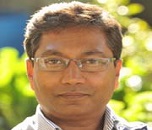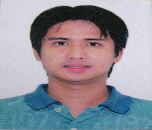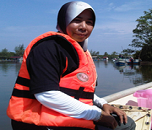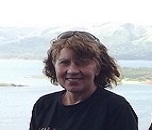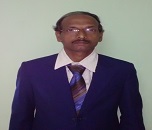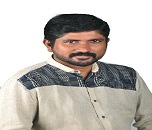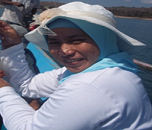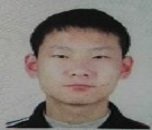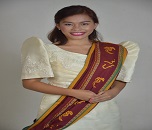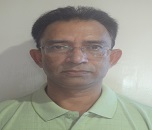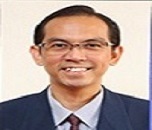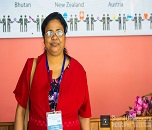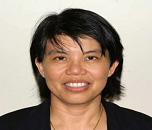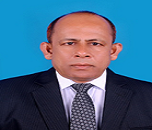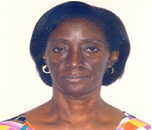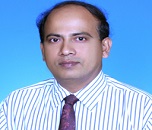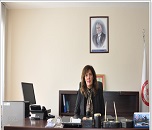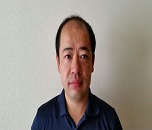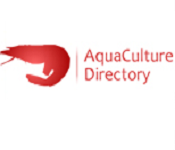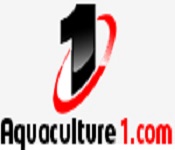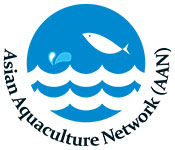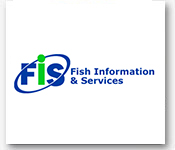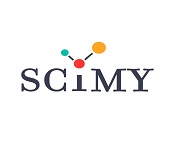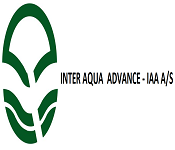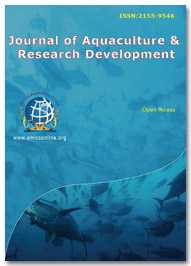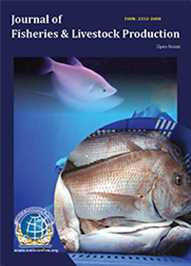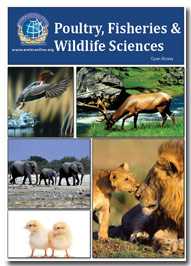Theme: Harvest Future Sustainable Aquaculture
Aquaculture Summit 2016
Conferences Series LLC is going to organizing 2nd Global Summit on Aquaculture & Fisheries during July 11-13, 2016 Kuala Lumpur, Malaysia
Track 1: Aquaculture Genetics and Breeding
The Inheritance of desirable traits in aquaculture & fisheries has been the evolution of selective breeding for thousands of years. However, the understanding of genetics, which is the biological basis of heredity and variation among organisms, has deepened dramatically in the last several decades. This new knowledge expands the potential applications of aquaculture genetics and breeding technologies in aquaculture practices. The scientists of the aquaculture genetics and breeding technology use a combination of selective breeding and genetic research. Goal is to help revitalize the economic value of aquaculture around the globe, and to improve the aquaculture industry meet humanity's growing appetite for seafood. The focus of aqua professionals is to provide genetically superior brood stock to industry. Initial efforts emphasized development of disease-tolerant strains of different species, whose population is more in our advanced environmental conditions.
Related conferences:
2nd Global Summit on Aquaculture & Fisheries July 11-13, 2016, Kuala Lumpur, Malaysia; 3rd International Conference on Fisheries & Aquaculture November 28-30, 2016, San Antonio, USA; 4th International Conference on Aquaculture & Fisheries September 29-October 01 2016, London, UK; 4th International Conference on Oceanography & Marine Biology July 18-20, 2016, Brisbane, Australia; Asian-Pacific Aquaculture, April 26-29, 2016, Surabaya, Indonesia; 17th International Symposium on Feeding Nutrition in fish June 05-10, 2016, Idaho, USA; The 11th Asian Fisheries and Aquaculture Forum August 03-07, 2016, Bangkok, Thailand; International Conference on Marine Science & Aquaculture, March 23, 2016, Kotakinabalu, Malaysia; Aquaculture America, Feb 19-22, 2016, San Antonio, USA.
Related Societies:
World Aquaculture Society, USA; Coastal Aquaculture Society of India, India; Asian Fisheries Society, Singapore; Singapore Aquarium Fish Exporters Association, Singapore; Philippine Tropical Fish Exporters Association, Philippines; Japan Fisheries Association, Japan; China Aquatic Products Processing and Marketing Alliance, China; National Aquaculture Association, USA; US Aquaculture Society, USA; Korea Overseas Fisheries Association, Korea.
Track 2: Aquaculture Engineering & Waste Management
Aquaculture engineering is well known of agricultural engineering that studies cultured aquatic toxicology and the production systems used in their culture. Study, aquaculture development in this area ranges from low intensity man-made pond systems to highly intensive recirculation systems involving natural lakes. Aquaculture waste management is one of the concerns with inshore aquaculture is that discarded nutrients and feces can settle below the farm on the seafloor and damage the benthic ecosystem. According to its proponents, the wastes from aquaculture that has been moved offshore tend to be swept away from the site and diluted. Moving aquaculture offshore also provides more space where aquaculture production can expand to meet the increasing demands for fisheries.
Related conferences:
2nd Global Summit on Aquaculture & Fisheries July 11-13, 2016, Kuala Lumpur, Malaysia; 3rd International Conference on fisheries & Aquaculture November 28-30, 2016, San Antonio, USA; 4th International Conference on Aquaculture & Fisheries September 29-October 01 2016, London, UK; 4th International Conference on Oceanography & Marine Biology July 18-20, 2016, Brisbane, Australia; World Aquaculture June 26-30, 2016, Cape Town, South Africa; Aquaculture UK May 25-26, 2016, Scotland, UK; Conference on feeding technologies and commercial fish farming January 26-28, 2016, Moscow, Russia; Conference on Biodiversity and Ecosystem 1st June, 2016, Vienna, Austria; Water Pollution 27th June 2016, Venice, Italy.
Related Societies:
Australian Marine Conservation Society, Australia; Tasmanian Salmonid Growers Association Ltd (TSGA), Australia; Japanese Society of Aquaculture Science, Japan; Aquaculture New Zealand, New Zealand; National Aquaculture Development Authority of Sri Lanka, Sri Lanka; Korea Overseas Fisheries Association, Korea; Society of Aquaculture Professional, India; Rajiv Gandhi Centre for Aquaculture, India; Institute of Aquaculture Singapore, Singapore; National Aquaculture Association, USA.
Track 3: Sustainable Aquaculture
Sustainable aquaculture is a dynamic concept and the sustainability of an aquaculture system will vary with species, location, societal norms and the state of knowledge and technology. Several certification programs have made progress in defining key characteristics of sustainable aquaculture. Global warming and aquaculture are interrelated processes, both of which take place on a global scale. Global warming affects aquaculture in a number of ways, including through changes in average temperatures, rainfall, and climate extremes (e.g., heat waves); changes in pests and diseases; changes in atmospheric carbon dioxide and ground-level ozone concentrations; changes in the nutritional quality of marine food; and changes in marine and fresh water aquaculture.
Related conferences:
2nd Global Summit on Aquaculture & Fisheries July 11-13, 2016, Kuala Lumpur, Malaysia; 3rd International Conference on fisheries & Aquaculture November 28-30, 2016, San Antonio, USA; 4th International Conference on Aquaculture & Fisheries September 29-October 01 2016, London, UK; 4th International Conference on Oceanography & Marine Biology July 18-20, 2016, Brisbane, Australia; The 11th Asian Fisheries and Aquaculture Forum August 03-07, 2016, Bangkok, Thailand; Conference on Biodiversity and Ecosystem 1st June, 2016, Vienna, Austria; 17th International Symposium on Nutrition in Fish June 05-10, 2016, Idaho, USA; Aquaculture UK May 25-26, 2016, Scotland, UK; World Aquaculture June 26-30, 2016, Cape Town, South Africa.
Related Societies:
Society of Aquaculture Professional, India; Rajiv Gandhi Centre for Aquaculture (RGCA), India; Institute of aquaculture Singapore, Singapore; National Aquaculture Association, USA; World Aquaculture Society, USA; Coastal Aquaculture Society of India, India; Asian Fisheries Society, Singapore; Singapore Aquarium Fish Exporters Association, Singapore; Philippine Tropical Fish Exporters Association, Philippines.
Track 4: Equipment’s for Aquaculture & Fisheries
Fishing technology varies in sophistication depending on the size of the vessel and the technology used. Generally, on-board equipment can be categorized into three categories: related to the wheelhouse, to the fishing environment and to handling. Depending on the advanced technology and the aquaculture scope, similarly the fishing equipment is also now in deep advanced stage.
Related conferences:
2nd Global Summit on Aquaculture & Fisheries July 11-13, 2016, Kuala Lumpur, Malaysia; 3rd International Conference on fisheries & Aquaculture November 28-30, 2016, San Antonio, USA; 4th International Conference on Aquaculture & Fisheries September 29-October 01 2016, London, UK; 4th International Conference on Oceanography & Marine Biology July 18-20, 2016, Brisbane, Australia; International Conference on Marine Science Aquaculture, March 23, 2016, Kotakinabalu, Malaysia; Aquaculture America, Feb 19-22, 2016, San Antonio, USA; Water Pollution 27th June 2016, Venice, Italy., Conference on Biodiversity 1st June, 2016, Vienna, Austria; Asian-Pacific Aquaculture, April 26-29, 2016, Surabaya, Indonesia;
Related Societies:
China Aquatic Products Processing and Marketing Alliance, China; National Aquaculture Association, USA; US Aquaculture Society, USA; Korea Overseas Fisheries Association, Korea; Australian Marine Conservation Society, Australia; Tasmanian Salmonid Growers Association Ltd (TSGA), Australia; Japanese Society of Aquaculture Science, Japan; Aquaculture New Zealand, New Zealand; National Aquaculture Development Authority of Sri Lanka, Sri Lanka; Rajiv Gandhi Centre for Aquaculture , India.
Track 5: Sea Food of Indian Ocean
Marine Food is any form of sea life regarded as food by humans. Seafood prominently includes fish and shellfish. Shellfish include various species of molluscs, crustaceans, and echinoderms. Historically, sea mammals such as whales and dolphins have been consumed as food, though that happens to a lesser extent in modern times. Edible sea plants, such as some seaweed and microalgae, are widely eaten as seafood around the world, especially in Asia (see the category of sea vegetables). In North America, although not generally in the United Kingdom, the term "marine food" is extended to fresh water organisms eaten by humans, so all edible aquatic life may be referred to as seafood. For the sake of completeness, this article includes all edible aquatic life. The harvesting of wild seafood is usually known as fishing or hunting, and the cultivation and farming of seafood is known as aquaculture, or poultry-Farming in the case of fish. Seafood is often distinguished from meat, although it is still animal and is excluded in a strict vegetarian diet. Seafood is an important source of protein in many diets around the world, especially in coastal areas
Related conferences:
2nd Global Summit on Aquaculture & Fisheries July 11-13, 2016, Kuala Lumpur, Malaysia; 3rd International Conference on fisheries & Aquaculture November 28-30, 2016, San Antonio, USA; 4th International Conference on Aquaculture & Fisheries September 29-October 01 2016, London, UK; 4th International Conference on Oceanography & Marine Biology July 18-20, 2016, Brisbane, Australia; Water Pollution 27th June 2016, Venice, Italy; Asian-Pacific Aquaculture, April 26-29, 2016, Surabaya, Indonesia; Conference on Biodiversity and Ecosystem 1st June, 2016, Vienna, Austria; 17th International Symposium on Nutrition in Fish June 05-10, 2016, Idaho, USA; Aquaculture UK May 25-26, 2016, Scotland, UK.
Related Societies:
Singapore Aquarium Fish Exporters Association, Singapore; Philippine Tropical Fish Exporters Association, Philippines; Japan Fisheries Association, Japan; China Aquatic Products Processing and Marketing Alliance, China; National Aquaculture Association, USA; US Aquaculture Society, USA; Korea Overseas Fisheries Association, Korea; Japanese Society of Aquaculture Science, Japan; Aquaculture New Zealand, New Zealand; National Aquaculture Development Authority of Sri Lanka, Sri Lanka.
Track 6: Seaweeds and Algal Aquaculture
Edible seaweed is algae that can be eaten and used in the preparation of food. It typically contains high amounts of fibre and they contain a complete protein. They may belong to one of several groups of multicellular algae: the red algae, green algae, and brown algae. Seaweeds are also harvesting or cultivating for the extraction of alginate, agar and carrageenan, gelatinous substances collectively known as hydrocolloids or phycocolloids. Hydrocolloids have attained commercial significance, especially in food production as food additives. The food industry exploits the gelling, water-retention, emulsifying and other physical properties of these hydrocolloids. Most edible seaweeds are marine algae whereas most freshwater algae are toxic. Some marine algae contain acids that irritate the digestion canal, while some others can have a laxative and electrolyte-balancing effect.
Related conferences:
2nd Global Summit on Aquaculture & Fisheries July 11-13, 2016, Kuala Lumpur, Malaysia; 3rd International Conference on fisheries & Aquaculture November 28-30, 2016, San Antonio, USA; 4th International Conference on Aquaculture & Fisheries September 29-October 01 2016, London, UK; 4th International Conference on Oceanography & Marine Biology July 18-20, 2016, Brisbane, Australia; Aquaculture America, Feb 19-22, 2016, San Antonio, USA; International Conference on Marine Science & Aquaculture, March 23, 2016, Kotakinabalu, Malaysia; Conference on feeding technologies and commercial fish farming January 26-28, 2016, Moscow, Russia; World Aquaculture June 26-30, 2016, Cape Town, South Africa; Conference on Biodiversity and Ecosystem 1st June, 2016, Vienna, Austria.
Related Societies:
Tasmanian Salmonid Growers Association Ltd , Australia; Japanese Society of Aquaculture Science, Japan; Aquaculture New Zealand, New Zealand; National Aquaculture Development Authority of Sri Lanka, Sri Lanka; Korea Overseas Fisheries Association, Korea; Singapore aquarium fish exporters association, Singapore; Philippine Tropical Fish Exporters Association, Philippines; Japan Fisheries Association, Japan; China Aquatic Products Processing and Marketing Alliance, China; Rajiv Gandhi Centre for Aquaculture , India
Track 7: Marine & Brackish Water Aquaculture
Brackish water or briny water is water that has more sea surface salinity than fresh water, but not as much as seawater. It may result from mixing of seawater with fresh water, as in estuaries, or it may occur in brackish fossil aquifers. The word comes from the Middle Dutch root "brak". Certain human activities can produce brackish water, in particular certain civil engineering projects such as dikes and the flooding of coastal marshland to produce brackish water pools for freshwater prawn farming. Brackish water is also the primary waste product of the salinity gradient power process. Because brackish water is hostile to the growth of most terrestrial plant species, without appropriate management it is damaging to the environment. Technically, brackish water contains between 0.5 and 30 grams of salt per litre more often expressed as 0.5 to 30 parts per thousand (ppt or ‰), which is a specific gravity of between 1.005 and 1.010. Thus, brackish covers a range of salinity regimes and is not considered a precisely defined condition. It is characteristic of many brackish surface waters that their salinity can vary considerably over space and/or time.
Related conferences:
2nd Global Summit on Aquaculture & Fisheries July 11-13, 2016, Kuala Lumpur, Malaysia; 3rd International Conference on fisheries & Aquaculture November 28-30, 2016, San Antonio, USA; 4th International Conference on Aquaculture & Fisheries September 29-October 01 2016, London, UK; 4th International Conference on Oceanography & Marine Biology July 18-20, 2016, Brisbane, Australia; 17th International Symposium on Feeding and Nutrition in Fish June 05-10, 2016, Idaho, USA; Aquaculture America, Feb 19-22, 2016, San Antonio, USA; International Conference on Marine Science & Aquaculture March 23, 2016, Kotakinabalu, Malaysia; Conference on Biodiversity and Ecosystem1st June, 2016, Vienna, Austria; Conference on feeding technologies and commercial fish farming January 26-28, 2016, Moscow, Russia.
Related Societies:
Philippine Tropical Fish Exporters Association, Philippines; Japan Fisheries Association, Japan; China Aquatic Products Processing and Marketing Alliance, China; National Aquaculture Association, USA; US Aquaculture Society, USA; Korea Overseas Fisheries Association, Korea; National Aquaculture Development Authority of Sri Lanka, Sri Lanka; Korea Overseas Fisheries Association, Korea; Singapore Aquarium Fish Exporters Association, Singapore; China Aquatic Products Processing and Marketing Alliance, China.
Track 8: Aquaculture Diseases and Chemotherapeutics
Like humans and other animals, fish suffer from diseases and parasites. Fish defences against disease are specific and non-specific. Non-specific defences include skin and scales, as well as the mucus layer secreted by the epidermis that traps microorganisms and inhibits their growth. If pathogens breach these defences, fish can develop inflammatory responses that increase the flow of blood to infected areas and deliver white blood cells that attempt to destroy the pathogens. Specific defences are specialised responses to particular pathogens recognised by the fish's body that is adaptive immune responses. In recent years, vaccines have become widely used in aquaculture and ornamental fish, for example vaccines for furunculosis in farmed salmon and koi herpes virus in koi. Some commercially important fish diseases are VHS, itch and Viral diseases.
Related conferences:
2nd Global Summit on Aquaculture & Fisheries July 11-13, 2016, Kuala Lumpur, Malaysia; 3rd International Conference on fisheries & Aquaculture November 28-30, 2016, San Antonio, USA; 4th International Conference on Aquaculture & Fisheries September 29-October 01 2016, London, UK; 4th International Conference on Oceanography & Marine Biology July 18-20, 2016, Brisbane, Australia; 17th International Symposium on Feeding and Nutrition in Fish June 05-10, 2016, Idaho, USA; Aquaculture America, Feb 19-22, 2016, San Antonio, USA; The 11th Asian Fisheries and Aquaculture Forum (11AFAF) August 03-07, 2016, Bangkok, Thailand; International Conference on Marine Science & Aquaculture, March 23, 2016, Kotakinabalu, Malaysia; World Aquaculture June 26-30, 2016, Cape Town, South Africa.
Related Societies:
Coastal Aquaculture Society of India, India; Asian Fisheries Society, Singapore; Singapore Aquarium Fish Exporters Association, Singapore; Philippine Tropical Fish Exporters Association, Philippines; Japan Fisheries Association, Japan; China Aquatic Products Processing and Marketing Alliance, China; National Aquaculture Association, USA; US Aquaculture Society, USA; Korea Overseas Fisheries Association, Korea; Rajiv Gandhi Centre for Aquaculture , India
Track 9: Women in Aquaculture and Fisheries
The fish you cook and eat arrives in your wok, in your cooking pot and on your plate or table thanks to the efforts of many women and men working along the value chain from the sea, the lake, pond or cage through to the market kitchen and restaurant. Yet, fishing and fisheries has long been pictured as mainly the domain of men. Since 1998, the Asian fisheries society has explored the roles of women and the importance of gender analysis in fisheries and aquaculture through a series of global Symposia. The gender in agriculture Sourcebook presents a rich compilation of experiences, some of them ongoing, in which agricultural projects have incorporated gender-related components or adapted their operations to allow for gender variables and engage issues that affect men and women differently. It was produced jointly by the World Bank, the food and agriculture organization of the United Nations, and the International Fund for agricultural development ,drawing from the operations of these three agencies. It was released on October 8, 2008. The gender in agriculture sourcebook describes the very often great practical consequences for the respective potentials of women and men as agricultural producers. The experiences chronicled capture a rich blend of hopeful innovations and cautionary lessons about the importance of avoiding the pitfalls of "gender-neutral" operations in areas in which gender issues are a salient variable in agricultural production - namely in the large majority of rural settings in low-income countries where agriculture remains a major engine of economic growth. Other lessons emerge from projects in middle income developing countries.
Related conferences:
2nd Global Summit on Aquaculture & Fisheries July 11-13, 2016, Kuala Lumpur, Malaysia; 3rd International Conference on fisheries & Aquaculture November 28-30, 2016, San Antonio, USA; 4th International Conference on Aquaculture & Fisheries September 29-October 01 2016, London, UK; 4th International Conference on Oceanography & Marine Biology July 18-20, 2016, Brisbane, Australia; Aquaculture America, Feb 19-22, 2016, San Antonio, USA; Asian-Pacific Aquaculture, April 26-29, 2016, Surabaya, Indonesia; 17th International Symposium on Feeding and Nutrition in Fish June 05-10, 2016, Idaho, USA; The 11th Asian Fisheries and Aquaculture Forum (11AFAF) August 03-07, 2016, Bangkok, Thailand; International Conference on Marine Science & Aquaculture, March 23, 2016, Kotakinabalu, Malaysia;
Related Societies:
Japanese Society of Aquaculture Science, Japan; Aquaculture New Zealand, New Zealand; National Aquaculture Development Authority of Sri Lanka, Sri Lanka; Korea overseas Fisheries Association, Korea; Society of Aquaculture Professional, India; Rajiv Gandhi Centre for Aquaculture , India; Institute of aquaculture Singapore, Singapore; National Aquaculture Association, USA; Australian Marine Conservation Society, Australia; Tasmanian Salmonid Growers Association Ltd , Australia.
Track 10: Aquatic Invasive Species
An invasive species is a plant or animal that is not native to a specific location (an introduced species); and has a tendency to spread, which is believed to cause damage to the environment, human economy and/or human health. The term as most often used applies to introduced species (also called "non-indigenous" or "non-native") that adversely affect the habitats and bioregions they invade economically, environmentally, and/or ecologically. Such invasive species may be either plants or animals and may disrupt by dominating a region, wilderness areas, particular habitats, or wildland-urban interface land from loss of natural controls (such as predators or herbivores). This includes non-native invasive species.
Related conferences:
2nd Global Summit on Aquaculture & Fisheries July 11-13, 2016, Kuala Lumpur, Malaysia; 3rd International Conference on fisheries & Aquaculture November 28-30, 2016, San Antonio, USA; 4th International Conference on Aquaculture & Fisheries September 29-October 01 2016, London, UK; 4th International Conference on Oceanography & Marine Biology July 18-20, 2016, Brisbane, Australia; Water Pollution 27th June 2016, Venice, Italy; Conference on Biodiversity and Ecosystem 1st June, 2016, Vienna, Austria; Conference on feeding technologies and commercial fish farming January 26-28, 2016, Moscow, Russia;; World Aquaculture June 26-30, 2016, Cape Town, South Africa; Aquaculture UK May 25-26, 2016, Scotland, UK
Related Societies:
Japan Fisheries Association, Japan; China Aquatic Products Processing and Marketing Alliance, China; National Aquaculture Association, USA; US Aquaculture Society, USA; Korea Overseas Fisheries Association, Korea; Japanese Society of Aquaculture Science, Japan; Aquaculture New Zealand, New Zealand; National Aquaculture Development Authority of Sri Lanka, Sri Lanka; Singapore Aquarium Fish Exporters Association, Singapore; Philippine Tropical Fish Exporters Association, Philippines.
Track 11: Aquaculture in Asia-Pacific Countries
The Asia-Pacific Fishery Commission, originally called the Indo-Pacific Fisheries Council is a Food and Agriculture Organization Article XIV Regional Fisheries Body which covers fisheries, aquaculture and related aquatic resource issues in the Asia-Pacific region. APFIC functions as a Regional Consultative Forum raising awareness amongst member countries, fisheries organizations and fisheries professionals in the Asia-Pacific region. In recent years, APFIC has covered a range of regional fisheries issues, including co-management of fisheries, low value/trash fish (may be referred to as bycatch where not targeted catch) in the region, illegal, unreported and unregulated fishing and fishing capacity management, certification in fisheries (e.g. ecolabel) and aquaculture, ecosystem approach to fisheries and aquaculture and improving resilience of fishery livelihoods. Most recently work has focussed on developing a training course for Ecosystem Approach to Fishery Management and guidelines for tropical trawl fisheries management.
Related conferences:
2nd Global Summit on Aquaculture & Fisheries July 11-13, 2016, Kuala Lumpur, Malaysia; 3rd International Conference on fisheries & Aquaculture November 28-30, 2016, San Antonio, USA; 4th International Conference on Aquaculture & Fisheries September 29-October 01 2016, London, UK; 4th International Conference on Oceanography & Marine Biology July 18-20, 2016, Brisbane, Australia; Asian-Pacific Aquaculture, April 26-29, 2016, Surabaya, Indonesia; International Conference on Marine Science & Aquaculture, March 23, 2016, Kotakinabalu, Malaysia; Conference on Biodiversity and biodiversity 1st June, 2016, Vienna, Austria; World Aquaculture June 26-30, 2016, Cape Town, South Africa; The 11th Asian Fisheries and Aquaculture Forum August 03-07, 2016, Bangkok, Thailand.
Related Societies:
Singapore Aquarium Fish Exporters Association, Singapore; Philippine Tropical Fish Exporters Association, Philippines; US Aquaculture Society, USA; Korea Overseas Fisheries Association, Korea; Australian Marine Conservation Society, Australia; Tasmanian Salmonid Growers Association Ltd , Australia; Japanese Society of Aquaculture Science, Japan; Aquaculture New Zealand, New Zealand; National Aquaculture Development Authority of Sri Lanka, Sri Lanka; Rajiv Gandhi Centre for Aquaculture , India.
Track 12: Aquaculture Marketing and Business
The systems and technology used in aquaculture has developed rapidly in the last fifty years. They vary from very simple facilities (e.g. family ponds for domestic consumption in tropical countries) to high technology systems (e.g. intensive closed systems for export production). Much of the technology used in aquaculture is relatively simple, often based on small modifications that improve the growth and survival rates of the target species, e.g. improving food, seeds, oxygen levels and protection from predators. Simple systems of small freshwater ponds, used for raising herbivorous and filter feeding fish, account for about half of global aquaculture production. A greater understanding of complex interactions between nutrients, bacteria and cultured organisms, together with advances in hydrodynamics applied to pond and tank design, have enabled the development of closed systems. These have the advantage of isolating the aquaculture systems from natural aquatic systems, thus minimizing the risk of disease or genetic impacts on the external systems.
Related conferences:
2nd Global Summit on Aquaculture & Fisheries July 11-13, 2016, Kuala Lumpur, Malaysia; 3rd International Conference on fisheries & Aquaculture November 28-30, 2016, San Antonio, USA; 4th International Conference on Aquaculture & Fisheries September 29-October 01 2016, London, UK; 4th International Conference on Oceanography & Marine Biology July 18-20, 2016, Brisbane, Australia; Aquaculture America, Feb 19-22, 2016, San Antonio, USA; International Conference on Marine Science & Aquaculture, March 23, 2016, Kotakinabalu, Malaysia; The 11th Asian Fisheries and Aquaculture Forum August 03-07, 2016, Bangkok, Thailand; 17th International Symposium on Feeding and nutrition in fish June 05-10, 2016, Idaho, USA; Asian-Pacific Aquaculture, April 26-29, 2016, Surabaya, Indonesia.
Related Societies:
Aquaculture New Zealand, New Zealand; National Aquaculture Development Authority of Sri Lanka, Sri Lanka; Korea Overseas Fisheries Association, Korea; Society of Aquaculture Professional, India; Rajiv Gandhi Centre for Aquaculture , India; Institute of Aquaculture Singapore, Singapore; National Aquaculture Association, USA; Coastal Aquaculture Society of India, India; Asian Fisheries Society, Singapore; Singapore Aquarium Fish Exporters Association, Singapore; Philippine Tropical Fish Exporters Association, Philippines.
Track 13: Aquaponics
Aquaponics is a bio-integrated system that links recirculating aquaculture with hydroponic vegetable, flower, and/or herb production. Recent advances by researchers and growers alike have turned aquaponics into a working model of sustainable food production. This publication provides an introduction to aquaponics with brief profiles of working units around the country. An extensive list of resources points the reader to print and Web-based educational materials for further technical assistance.
Related conferences:
2nd Global Summit on Aquaculture & Fisheries July 11-13, 2016, Kuala Lumpur, Malaysia; 3rd International Conference on fisheries & Aquaculture November 28-30, 2016, San Antonio, USA; 4th International Conference on Aquaculture & Fisheries September 29-October 01 2016, London, UK; 4th International Conference on Oceanography & Marine Biology July 18-20, 2016, Brisbane, Australia; Water Pollution 27th June 2016, Venice, Italy; Asian-Pacific Aquaculture, April 26-29, 2016, Surabaya, Indonesia; Conference on Biodiversity and Ecosystems1st June, 2016, Vienna, Austria; 17th International Symposium on Feeding and Nutrition in fish June 05-10, 2016, Idaho, USA; Aquaculture UK May 25-26, 2016, Scotland, UK.
Related Societies:
Korea Overseas Fisheries Association, Korea; National Aquaculture Development Authority of Sri Lanka, Sri Lanka; Korea Overseas Fisheries Association, Korea; Singapore Aquarium Fish Exporters Association, Singapore; China Aquatic Products Processing and Marketing Alliance, China; Philippine Tropical Fish Exporters Association, Philippines; Japan Fisheries Association, Japan; China Aquatic Products Processing and Marketing Alliance, China; National Aquaculture Association, USA; National Aquaculture Society, USA.
Conferences Series LLC invites all the participants from all over the world to attend 2nd Global Summit on Aquaculture & Fisheries (Aquaculture Summit 2016) during July 11-13, 2016 in Kuala Lumpur, Malaysia which includes prompt keynote presentations, Oral talks, Poster presentations and Exhibitions.
Aquaculture Conferences brings together a unique and International mix of experts, like aquaculture engineers, researchers and decision makers both from academia and industry across the globe to exchange their knowledge, experience and research innovations to its world aquaculture conference. Aquaculture is a Major Field in modern food supply according to the FAO, aquaculture "is understood to mean the farming of aquatic organisms including fish, molluscs, crustaceans and aquatic plants. Farming implies some form of intervention in the rearing process to enhance production, such as regular stocking, feeding, protection from predators,
In the recently published global outlook report entitled Fish to 2030, the overwhelming majority of the projected increase in global fish production is expected to come from aquaculture as it has for the past several decades. The production gains from various regions of the world and the share that comes from aquaculture.
Conferences Series LLC organizes a conference series of 1000+ Global Events inclusive of 300+ Conferences, 500+ Upcoming and Previous Symposiums and Workshops in USA, Europe & Asia with support from 1000 more scientific societies and publish 700+ Open access journals which contains over 30000 eminent personalities, reputed scientists as editorial board members.
With members from around the world focused on learning about Aquaculture & Fisheries and its advances; this is your best opportunity to reach the largest assemblage of participants from the Aquaculture & Fisheries community. Conduct presentations, distribute information, meet with current and potential scientists, make a splash with new Aquaculture developments, and receive name recognition at this 3-day event. World-renowned speakers, the most recent techniques, developments, and the newest updates in Aquaculture & Fisheries are hallmarks of this conference.
Aquaculture & Fisheries Students, Scientists
Aquaculture & Fisheries Researchers
Aquaculture & Fisheries Faculty
Aquaculture & Fisheries Colleges
Aquaculture & Fisheries Associations and Societies
Aquaculture & Fisheries Business Entrepreneurs
Aquaculture & Fisheries Training Institutes
Aquaculture & Fisheries Software developing companies
Aquaculture & Fisheries Manufacturing Devices Companies
Aquaculture & Fisheries Data Management Companies
Kuala Lumpur is the capital city of Malaysia, while Putrajaya is the seat of the federal government. By 2015, with a population of over 30 million, Malaysia became the 43rd most populous country in the world. The southernmost point of continental Eurasia, Tanjung Piai, is in Malaysia, located in the tropics. It is one of 17 mega diverse countries on earth, with large numbers of endemic species. Tourism plays an important role in the city’s service-driven economy. Many large worldwide hotel chains have a presence in the Kuala Lumpur. KL is the sixth most visited city in the world, with 8.9 million tourists per year. Tourism in Kuala Lumpur driven by the city’s cultural diversity, relatively low costs, and wide gastronomic and shopping variety. MICE tourism, which mainly encompasses conventions has expanded in recent years to become a vital component of the industry, and is expected to grow further once the Malaysian government’s Economic Transformation Programme kicks in, and with the completion of a new 93,000m2-size MATRADE Centre in 2014. Another notable trend is the increased presence of budget hotels in the city.
Market Analysis :
Summary: Aquaculture Summit 2016 welcomes attendees, presenters, and exhibitors from all over the world to Kuala Lumpur, Malaysia. We are delighted to invite you all to attend and register for the “2nd Global Summit on Aquaculture & Fisheries (Aquaculture Summit 2016)” which is going to be held during July 11-13, 2016 at Kuala Lumpur, Malaysia. The organizing committee is gearing up for an exciting and informative conference program including plenary lectures, symposia, workshops on a variety of topics, poster presentations and various programs for participants from all over the world. We invite you to join us at the Aquaculture Summit 2016, where you will be sure to have a meaningful experience with researchers and industrial people across the world. All the members of Aquaculture Summit 2016 organizing committee look forward to meet you at Kuala Lumpur, Malaysia.

For more details please visit: http://aquaculture.global-summit.com/
Importance and Scope: An understanding of the principles of operation of capture and culture fisheries helps to throw light on the definition of aquaculture. The expressions capture and culture fisheries are self-explanatory. In the former, one reaps the aquatic harvest without having to sow, whereas, in the latter, one has to sow the seed, nurse it, tend it, rear it and harvest it when it grows to marketable size. Examples of capture fisheries are the natural fisheries of the seas, estuaries, rivers, lagoons, large lakes etc. Culture fisheries are usually carried out in small water bodies which can be manipulated, pre-prepared for stocking; which are often manured and/or fertilized before, during and after sticking. Pen culture, cage culture, culture in running waters, in recirculating systems and in reconditioned water are some special types of aquaculture.
The principles of management of capture and culture fisheries are very different from each other. In the case of capture fisheries one has to attempt to harvest maximum sustainable yield by regulating fishing effort and mesh after taking into account parameters of population dynamics such as rates of recruitment, natural and fishing mortalities, fish growth and size at which recruitment occurs. Management of capture fisheries requires knowledge of the dynamics of the fish populations under exploitation. The extended exclusive economic zone of 200 miles brings into focus the national and international complexities of regulating the capture fisheries of the seas and the oceans and apportionment of the marine harvest because fish populations do not abide by man-made boundaries.
Global Market Segmentation:
Global aquaculture demand was 69,230 kilo tons in 2013 and is expected to reach 80,400 kilo tons by 2020, growing at a CAGR of 2.0% from 2014 to 2020.
China was largest market for aquaculture, accounting for about 53% of global market share, valued at USD 77,934.8 million in 2013. The market is expected to show rapid growth due to favourable climatic conditions for aqua farming, availability of resources and labour.
Asia Pacific (excluding China) was the second largest market for aquaculture with market demand of 17.965.2 kilo tons in 2013, and is estimated to grow with a CAGR of 2.1% from 2014 to 2020 due to ideal climatic conditions and technological innovation in this region.
In 2013, fresh water was the largest culture environment for aquaculture with market share of over 60% and is expected to witness swift growth, at an estimated CAGR of 2.2% from 2014 to 2020.

Why Kuala Lumpur, Malaysia..?
Over the past years Southeast Asia especially Malaysia has become the powerhouse of global fish and shrimp farming and has a clear vision to further expand its aquaculture production. With food safety and environmental protection as key requirements of today's aquaculture, Together with our active role in the analysis of standards for sustainable farming practices, aquaculture market, aquaculture research, aquaculture societies, Malaysia is the suitable place to all Asian countries to reach Aquaculture Summit 2016, Kuala Lumpur, Malaysia is also famous as world’s best tourism spot, So we are committed to place our Aquaculture Summit 2016 in Kuala Lumpur, Malaysia.
Table: Aquaculture prices are rising at more than twice the rate of wild-catch prices

Conference Highlights:
· Aquaculture Genetics and Breeding
· Aquaculture Engineering & Waste Management
· Sustainable Aquaculture
· Equipment’s for Aquaculture & Fisheries
· Sea Food of Indian Ocean
· Seaweeds and Algal Aquaculture
· Marine & Brackish Water Aquaculture
· Aquaculture Diseases and Chemotherapeutics
· Women in Aquaculture and Fisheries
· Aquatic Invasive Species
· Aquaculture in Asia-Pacific Countries
· Aquaculture Marketing and Business
Aquaculture Benefits:
Sustainability: Aquaculture is one of the fastest growing food production sectors in the world. More importantly, it is a fundamental element in the global solution to provide a sustainable seafood source. The addition of aquaculture to help satisfy fish demand helps natural stock population and growth, lessening the strain on stressed fisheries.
Consistency: Natural fisheries have limitations on how many fish can be caught, and are only available during certain months of the year. As an alternative, aquaculture can provide large and consistent quantities of fish and seafood.
Demand: The addition of aquaculture stocks such as salmon and oysters into the marketplace helps meet current seafood demands.
Environment: Recent studies conducted by NOAA indicate aquaculture poses a low risk to the environment.
Impacts: are typically local and temporary. In some cases, aquaculture can benefit the environment. In cases where filter feeding shellfish, such as oysters, are cultured in-situ, water quality in ponds and lakes can improve, although there are documented problems associated with aquaculture.
Global Fisheries and Aquaculture Universities:
· Agricultural University of Norway, Norway
· Auburn University, United States.
· Brunswick Community College, United States
· Chulalongkorn University, Thailand
· Deakin University, Victoria
· Delaware State University, United States
· Flinders University, Australia
· Heriot-Watt University, United Kingdom
· Hofstra University, United States
· Humboldt State University, United States
· James Cook University, Australia
· Kentucky State University, United States
· Malaspina University-College, Canada
· Mansfield University, United States
· Memorial University, Canada
· Northern Territory University, Australia
· Rhodes University, South Africa
· Southern Illinois University, United States
· State University of Ghent, Belgium
· Shanghai Ocean University, China
Universities in Malaysia for Aquaculture & Fisheries
· National University of Malaysia, Malaysia
· University of Science, Malaysia
· Putra University, Malaysia
· University Saint, Malaysia
· University of Malaya, Malaysia
Fisheries and Aquaculture Research Institutes:
· Andalusia Centre for Marine Science and Technology, Spain
· Bureau of Fisheries and Aquatic Resources, Philippine
· Central Institute of Brackish Water Aquaculture, India
· Central Institute of Fisheries Technology, India
· Central Marine Fisheries Research Institute, India
· Deep Bay Marine Field Station, Canada
· Fisheries Research and Development Corporation, Australia
· Fisheries Research Services Marine Laboratory, UK
· Global Ocean Ecosystem Dynamics, Chile
· Korea Institute of Maritime and Fisheries Technology, South Korea
· Marine Institute Ireland, Ireland
· National Fisheries Research & Development Institute, South Korea
Aquaculture & Fisheries Research Institutes in Malaysia:
· World Fish is an international research organization, Malaysia
· National Centre for Biological Sciences, Malaysia
· Sarawak Biodiversity Centre, Malaysia
· Standards and Industrial Research Institute of Malaysia, Malaysia
· MIMOS Berhad, Malaysia
Global Aquaculture Societies:
· Asian Fisheries Society
· China Society of Fisheries, China
· Korean Society of Fisheries and Sciences (KOSFAS), Korea
· Aquaculture Association of Canada, Canada
· Aquaculture Association of S. Africa, South Afreica
· European Aquaculture Society, Europe
· Brazilian Aquaculture Society (AQUABIO), Brazil
· Indonesian Aquaculture Society, Indonesia
· Society of Aquaculture Professionals, India
· Malaysian Fisheries Society, Malaysia
· Egyptian Aquaculture Society, Egypt
· Spanish Aquaculture Association (SEA), Spain
Aquaculture Societies in Malaysia:
· Malaysian Fisheries Society, Malaysia
· National Oceanic and Atmospheric Administration (NOAA), Malaysia
· Catalogue of Federal Domestic Assistance (CFDA), Malaysia
Funding Agencies:
· Food and Agriculture Organization of the United Nations,
· World Aquaculture Society
· Taiwan Fish Society, Taiwan
· Malaysian Fisheries Society , Malaysia
· National Oceanic and Atmospheric Administration


Conference Highlights
- Aquaculture Genetics and Breeding
- Aquaculture Engineering & Waste Management
- Sustainable Aquaculture
- Equipments for Aquaculture & Fisheries
- Sea Food
- Seaweeds and Algal Aquaculture
- Marine & Brackish Water Aquaculture
- Aquaculture Diseases and Chemotherapeutics
- Women in Aquaculture and Fisheries
- Aquatic Invasive Species
- Aquaculture in Asia-Pacific Countries
- Aquaculture Marketing and Business
- Entrepreneurs Investment Meet
- Aquaponics
To share your views and research, please click here to register for the Conference.
To Collaborate Scientific Professionals around the World
| Conference Date | July 11-13, 2016 | ||
| Sponsors & Exhibitors |
|
||
| Speaker Opportunity Closed | Day 1 | Day 2 | Day 3 |
| Poster Opportunity Closed | Click Here to View | ||
Useful Links
Special Issues
All accepted abstracts will be published in respective Our International Journals.
- Journal of Aquaculture Research & Development
- Fisheries and Aquaculture Journal
- Journal of Fisheries & Livestock Production
Abstracts will be provided with Digital Object Identifier by




